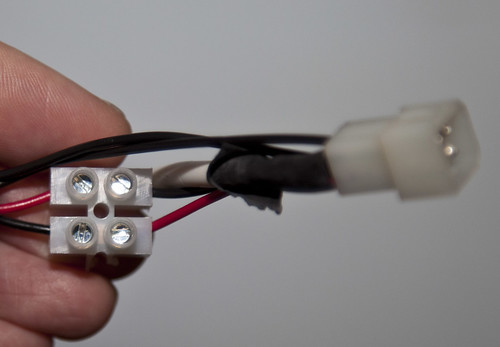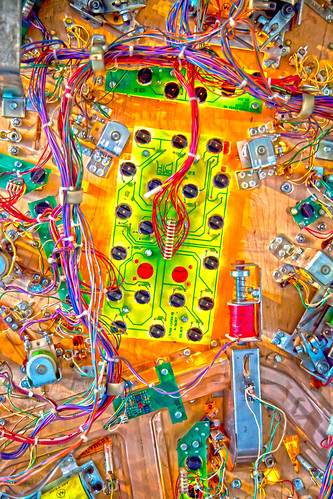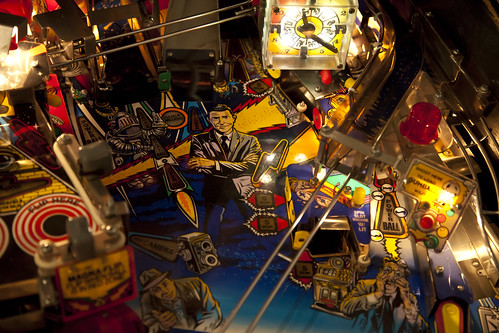I fired up the pinball machine yesterday. First time in a while that I've used it. Everything was fine. Except one thing. The menu button was not working. This is kind of important; it's how you select all the various options to set the machine up. With that broken I'm kind of stuck with the default settings, and I can't set the date and time (which the clock has forgotten because the battery backup has gone flat).
Oh well, nine times out of ten this means that either the switch is broken or a wire has come loose. Unfortunately, after a few minutes of investigation I discovered that the switch, and the wiring to the CPU board were fine. It got worse when I looked even more closely at the board itself. The batteries, which to be honest are rather stupidly located, had dumped their alkaline contents over the circuitry and left a trail of corrosion and damage. Not good.
So today (after discovering that replacement bards are available but cost around 150 pounds) I popped the CPU board out and took a look. Step one was to get rid of all the alkaline deposit. I used a toothbrush and some diluted white vinegar to sort that out and then washed the board liberally with isopropyl alcohol to clean things up.
Then I spent a very happy (and I actually mean this) hour or so tracing the faulty signal from the input pin through the circuit board on its way to the processor. Pro tip: Print out a picture of the pcb so that you can draw the trace on the top, like I did above.
Anyhoo, the signal went past all the dirty bits of the board, so I made ultra sure that they were all squeaky clean and there were no deposits bridging any of the connections. I also used my meter to ensure that all the signal paths were OK. After I'd popped the board back in I fired things up and I had my enter button back. Yay.









